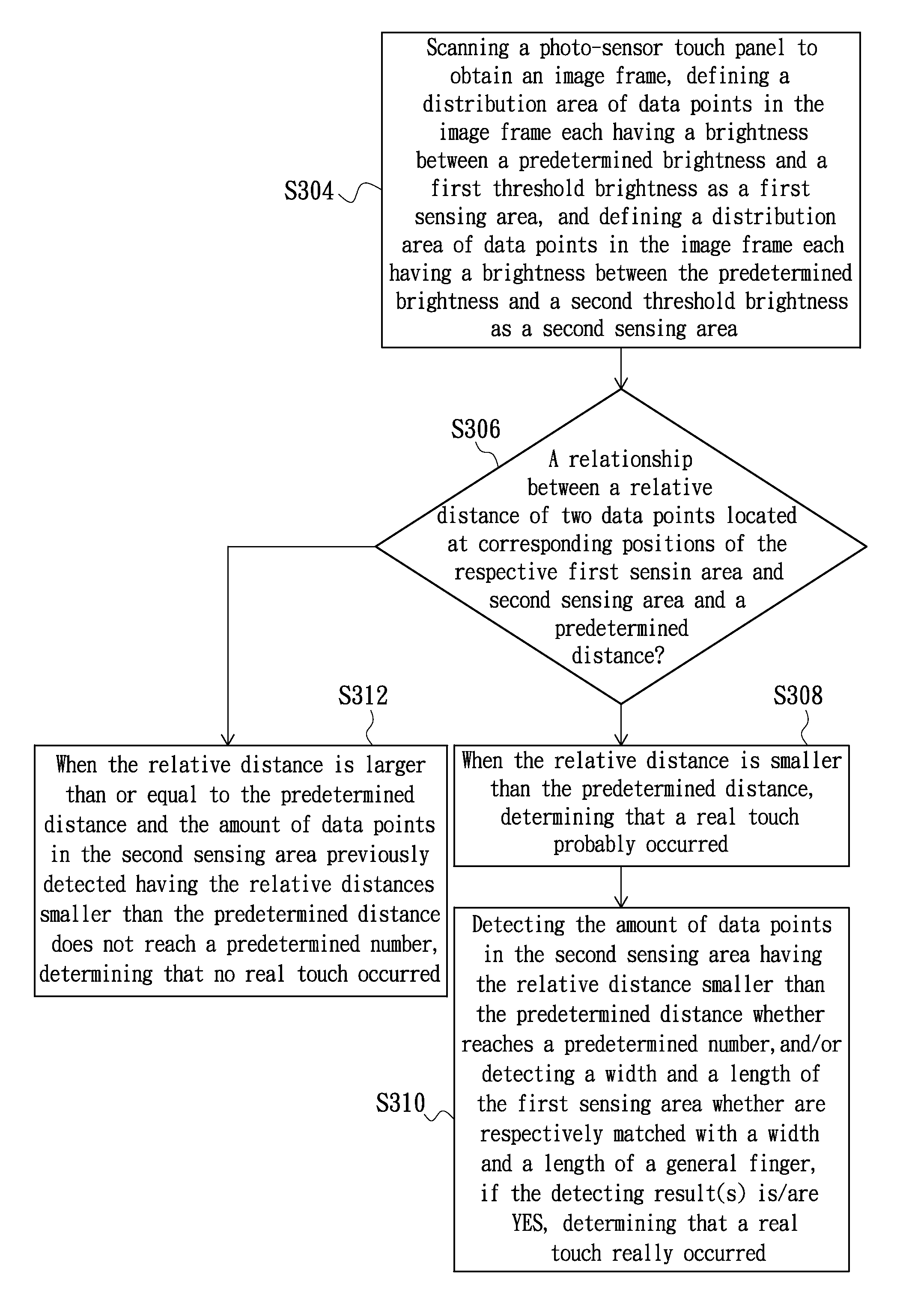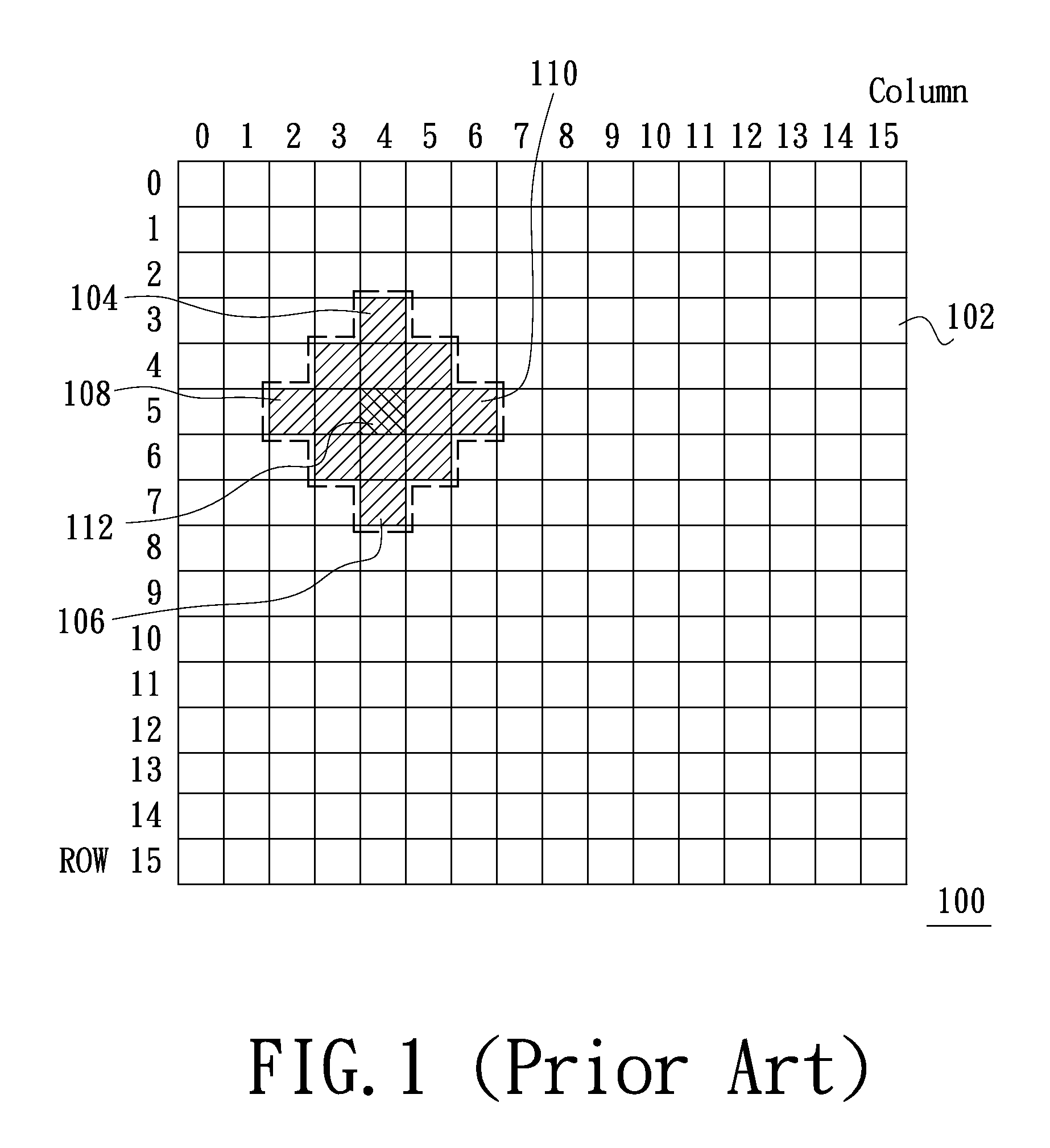Detecting Method for Photo-Sensor Touch Panel and Touch-Sensitive Electronic Apparatus using the same
- Summary
- Abstract
- Description
- Claims
- Application Information
AI Technical Summary
Benefits of technology
Problems solved by technology
Method used
Image
Examples
Embodiment Construction
[0018]FIG. 2 illustrates a touch-sensitive electronic apparatus in accordance with an embodiment of the present invention. The touch-sensitive electronic apparatus 200 includes a photo-sensor touch panel 202 and a control circuit 204. FIG. 3 is a flowchart of a detecting method for a photo-sensor touch panel in accordance with an embodiment of the present invention. Please refer to FIG. 2 and FIG. 3 according to the need of description. The control circuit 204 is configured (i.e., structured and arranged) for scanning the photo-sensor touch panel 202 to obtain an image frame, defining a distribution area of data points in the image frame each having a brightness between a predetermined brightness and a first threshold brightness as a first sensing area, and defining a distribution area of data points in the image frame each having a brightness between the predetermined brightness and a second threshold brightness as a second sensing area (as illustrated by the step S304 of FIG. 3). ...
PUM
 Login to View More
Login to View More Abstract
Description
Claims
Application Information
 Login to View More
Login to View More - R&D
- Intellectual Property
- Life Sciences
- Materials
- Tech Scout
- Unparalleled Data Quality
- Higher Quality Content
- 60% Fewer Hallucinations
Browse by: Latest US Patents, China's latest patents, Technical Efficacy Thesaurus, Application Domain, Technology Topic, Popular Technical Reports.
© 2025 PatSnap. All rights reserved.Legal|Privacy policy|Modern Slavery Act Transparency Statement|Sitemap|About US| Contact US: help@patsnap.com



